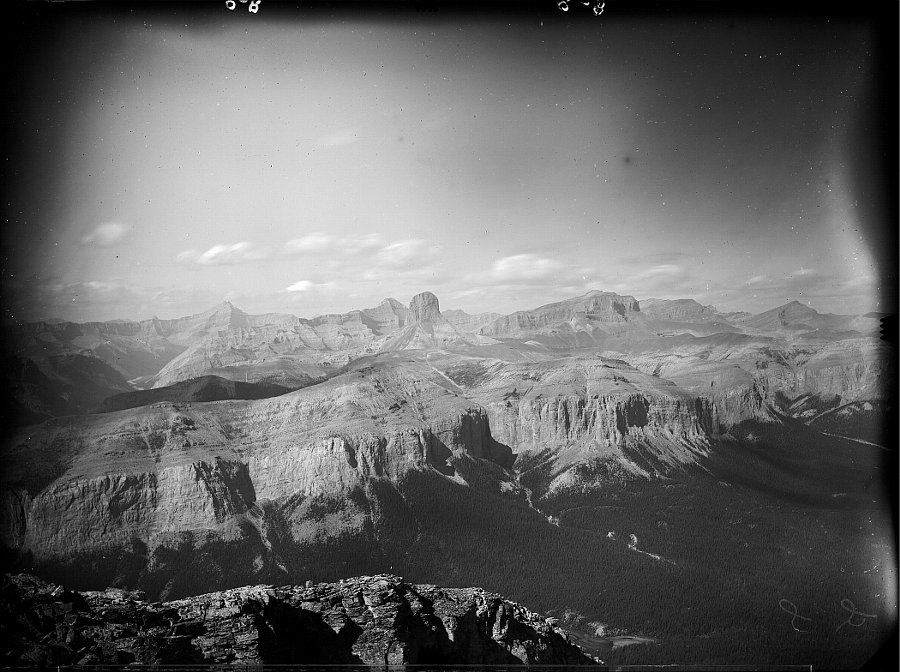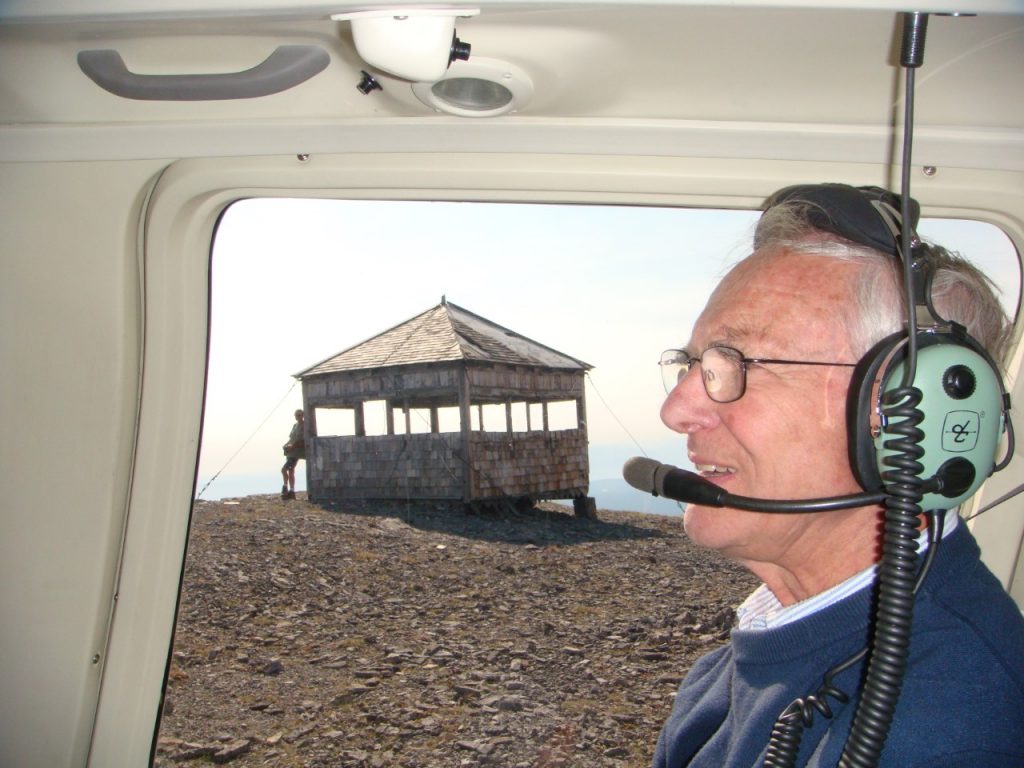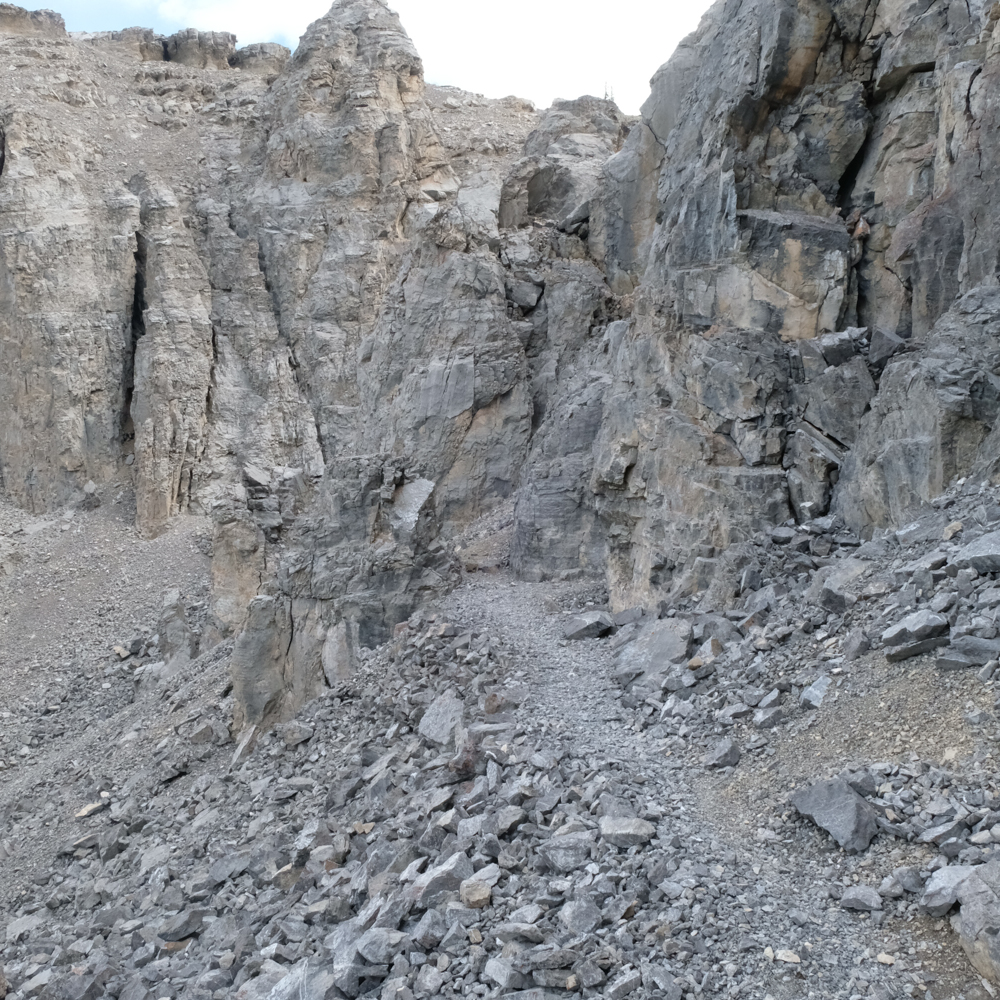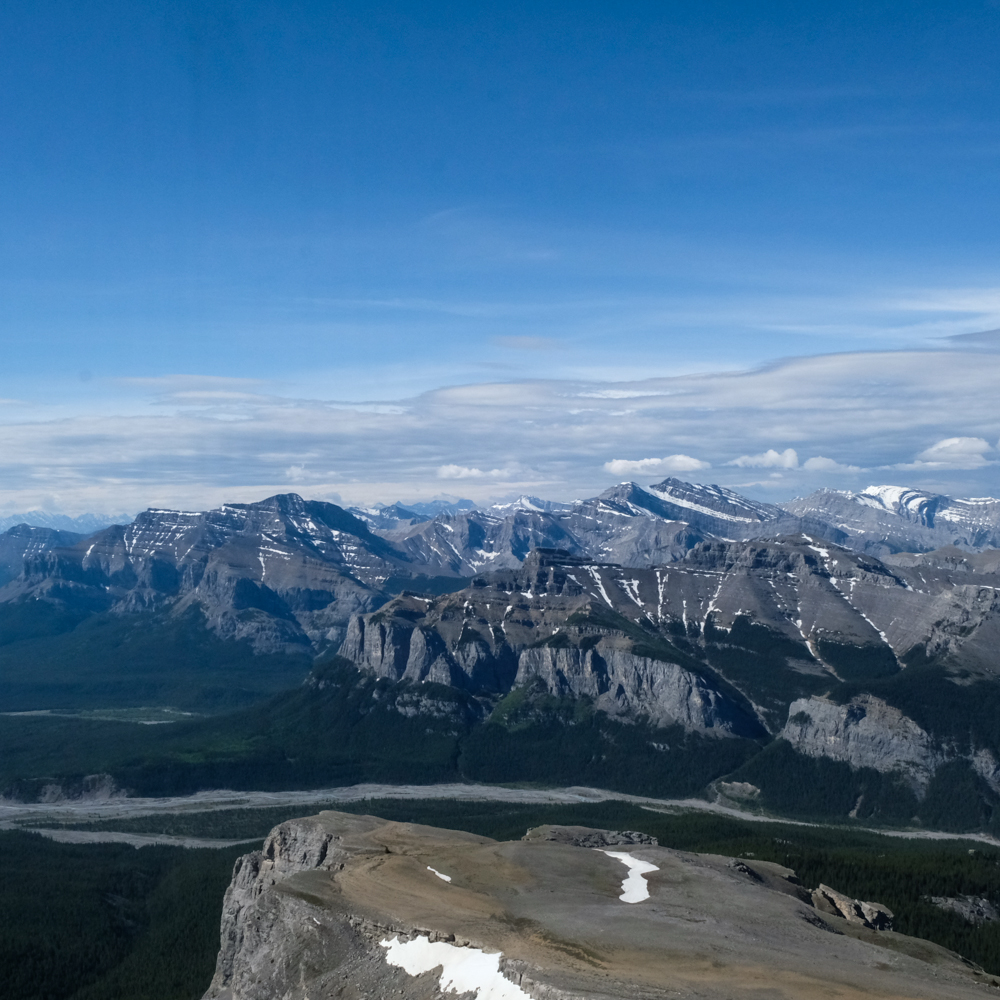Photo taken by Surveyor J. J. McArthur in 1889. View west from Black Rock Fire Lookout towards Devil’s Head Mountain (centre of photo).
By Kristen Walsh, November 4 2020
In 1889, as part of the Rocky Mountains Park and Coalfields Survey, Surveyor J. J. McArthur and his assistants horse-packed to the top of Black Rock Mountain with their bulky camera gear. This would have included saddle bags filled with fragile glass plates on which they would later take photographic negatives.
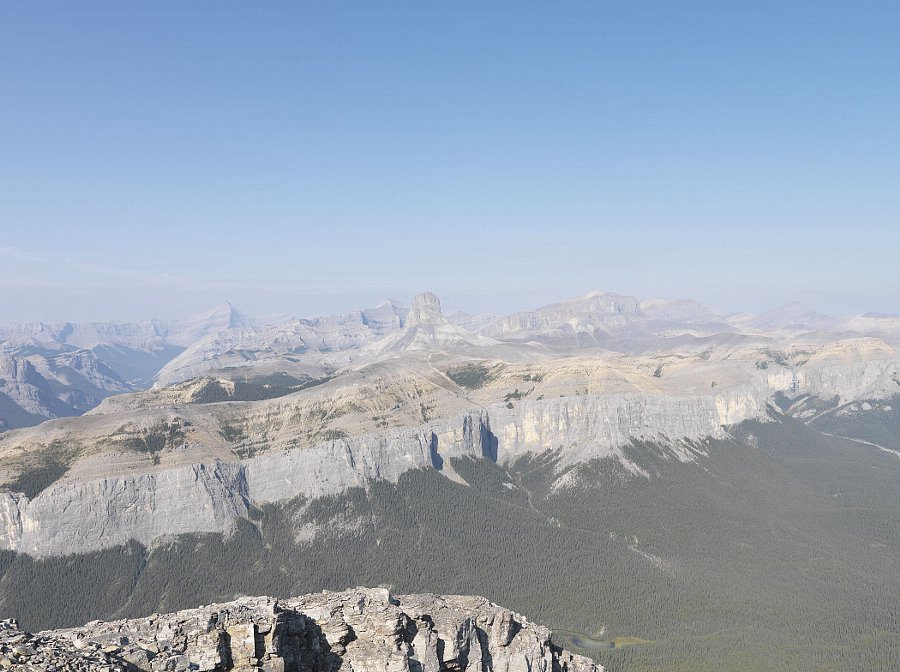
One hundred and twenty years later, in August 2009, Mountain Legacy Project crew members Rick Arthur and Mandy Annand, with a guest visit by the late Dr. Peter Murphy, flew in by helicopter to repeat the McArthur 1889 photograph. Dr. Peter Murphy, who sadly passed away on October 29 2020, was a pivotal figure in all things forestry, particularly forest policy, fire management and history. Peter inspired countless students and colleagues to think about forests differently. His legacy will live on deeply. Being an avid outdoorsman, Peter noted the “gorgeous albeit increasingly hazy weather” that day on Black Rock Mountain, and remarked on the “lovely old fire lookout”.
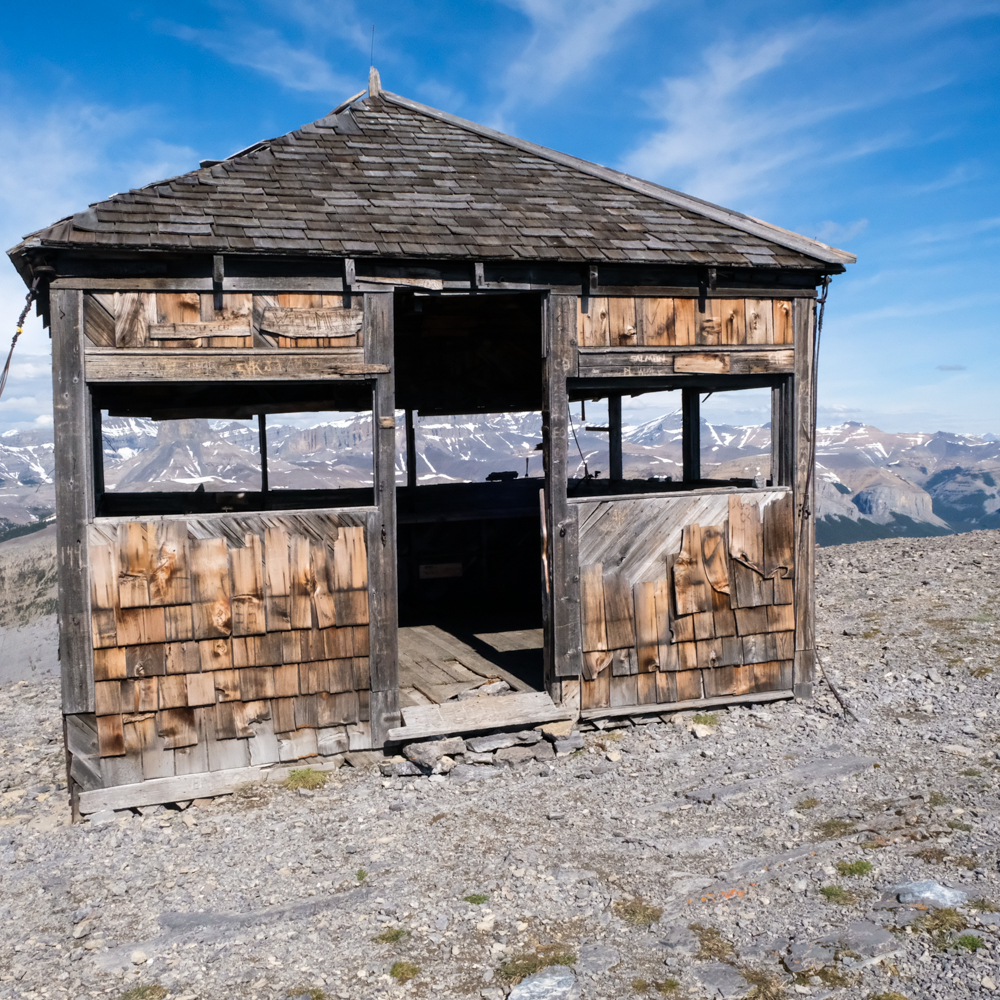
Black Rock Fire Lookout was built in 1928 by Harry Fisher of the Alberta Forest Service. Although the prominent peak offered wide and far reaching views into surrounding areas, the wind-beaten summit was often subject to inhospitable weather that socked it in. Impressive as a promontory, it was less than ideal as a fire lookout. Decommissioned in 1950 it was replaced by the currently staffed Mockingbird Hill Lookout to its North-East, which is lower in elevation and thus more welcoming weather-wise.
In 2015, I spent the summer hiking into alpine fire lookouts along the south-eastern slopes of the Canadian Rockies with Mary Sanseverino for my Master’s thesis research. While my research focused on staffed alpine fire lookouts (I was interviewing current Lookout Observers on their experiences living in mountain winds), Black Rock Lookout was immediately added to my bucket list of places to visit. We could see Black Rock Lookout well the day we hiked into nearby Mockingbird Hill Lookout.

In June 2020, I finally made it to Black Rock Fire Lookout. Tenting the night before in the Ghost River Valley below, I imagined how J. J. McArthur and company may have also done so. I rose at dawn, got the coffee on, and started up the meandering trail in the early morning hours to chase good light.
Above right: View of the Fire Lookout from the alpine meadow below. Photo: Kristen Walsh
The pursuit of good photographic light and crisp views is one thing that had not changed since J. J.’s time. Technologies had. My footwear, clothing and small mirrorless camera allowed me to be light a-foot, even trail run for several kilometres. As I neared the alpine meadow which offered the first panoramic views of the area, I caught myself and slowed to a wanderer’s pace. All these “modern” lightweight technologies did allow us to move quicker — but something was lost: the transition from place to place. And what that transition time offers.
As I moseyed along the trail, I pondered how the landscape had changed in the last 130 years. Were the forests always this mature? Were there more open meadows? Did Stoney First Nations burn here before it became a banned practice? And how has all this subsequently affected wildlife habitat and local flora? Eric Higgs writes eloquently about this quasi-dreamlike process of pondering the landscape in his book, Nature by Design. It’s no small wonder that most folks involved in the Mountain Legacy Project gravitate towards this kind of deep thinking about landscapes—that is, when we slow down enough to listen. What will this landscape look like in another 130 years?
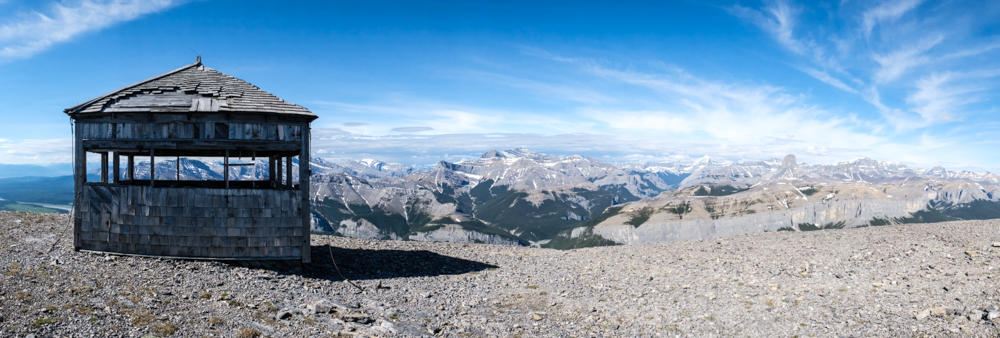
In early September perhaps we got a sneak preview of a warmer, drier land. On September 4, 2020, the Devil’s Head wildfire started from an abandoned backcountry campfire. Located in steep and windswept backcountry terrain, and given the summer drought conditions in Southern Alberta, the fire grew to over 2400 hectares, wrapping around both sides of Black Rock Mountain. While both British Columbia and Alberta were fortunate to have quiet fire seasons, the effects of wildfires burning with increased intensity and severity are certainly being felt in the U.S. and around the world.

Stay tuned for our upcoming post on wildfires in mountain landscapes in the months to come.
For more information:
Dr. Peter J. Murphy Legacy Scholarship
On Fire Lookouts in Alberta:
Walsh, K.A. 2020. “Wondering Winds: Alpine Fire Lookouts in the Canadian Rocky Mountains”, in J. LaPlante, A. Gandsman and W.Scobie, Search After Method: Sensing, Moving, Imagining in Anthropological Fieldwork, pp.199-210, NY: Berghahn.
The View from Here: Panoramas of Change from Alberta’s Fire Lookouts by Mary Sanseverino
Forgotten Fire Lookout: story by Trevor Dixon in the Calgary Guardian

